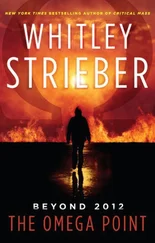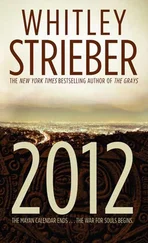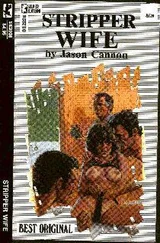One Dead Zone was San Antonio, the city where I was born and spent my youth and where my family lived before Warday.
In 1990 I pulled enough strings with the military to be granted a flyover of San Antonio. After two years, radiation levels were sufficiently low to permit aircraft to approach the cratered areas without much danger. The U.S. Army—South Texas Military Area Command—apparently makes such flyovers several times a week, sometimes for officials and foreign visitors, but also, I think, for a deeper reason. Even when the aircraft are empty of visitors, there remains the need to continue some human presence.
Entering a war zone—so called, I suppose, because it is a special place produced by war—is usually not possible overland. Radiation is only one problem; navigating rubble and half-collapsed buildings is by far the greater difficulty. Only the centermost circle of the blast area is smooth—the result of the vaporizing effects of the explosion.
San Antonio is not going to be cleared. There is no need. No one wants to live there, and the potential for salvage is limited. Nonmilitary visitors are confined to helicopter flyovers. To take the tour, I had to travel to Austin and then down to San Marcos, which is a combined Army and Air Force installation. It is the command headquarters for the San Antonio War Zone. After half a day of having my paperwork processed, signing waivers of liability, and undergoing low-level interrogation about my journalistic interests, I was put on a jeep and driven to the flight line. I boarded a six-passenger helicopter with Army markings.
My escort, the only other passenger on the flight, was a cheery captain who had made the trip dozens of times before. He kept up a mostly one-sided chatter all the way to the zone: “You’re not going to believe this place. It’s a symbol of immense, total power. And the bombs used weren’t even the largest the Soviets could have used.” He sounded like a schoolkid reciting from memory.
He made sure I was aware that no photographs were allowed. I knew that; my camera had been impounded before we left.
Why no pictures? Certainly there were no secrets to be revealed. The extent of the damage was well known. But I could understand the restriction. There is a pornography associated with such wanton, total destruction.
Since the war, a new terminology has emerged to describe the areas of nuclear destruction: Dead Zone, Red Zone, Orange Zone, Blue Zone, Green Zone. Painted signs, each with a skull at the center, reflect the varying levels of invisible death.
What Army photographs the captain showed me were curiously bland. Each had apparently been taken at a high altitude and showed only a flat, empty San Antonio, devoid of detail. Emptiness says little. It is the remaining detail that reveals the devastation.
Just ten miles out I noticed the first signs of the war: huge areas of rolling land devoid of any standing vegetation, blackened by what must have been a massive fire. Another few miles and there were collapsed heaps of charcoaled rubble, the remains of houses and barns that had stood in the rural areas outside the city. Then, to the right of the aircraft, we could see in the distance the uninhabited town of New Braunfels, a burned jumble of structures.
The captain told me that former residents often tried to return and resettle. They would go to the edges of the restricted zones and camp there, sometimes for months. I saw one such camp, a clutch of threadbare tents, and thought they are the people at the edge of the ocean.
As we headed for the first Ground Zero, or GZ as my guide called it, the last of the rubble passed beneath the helicopter. There were few buildings or houses left fully intact, though the contours of the land were varied enough to have made the destruction erratic. Closer to the center of the city there was only rubble. The downtown area, which had consisted of twenty or so tall buildings, now looked like a forest that had been reduced to haggard stumps.
For the first time the impact of a Dead Zone struck me: there was incomprehensible madness here.
Scattered through the rubble were remote stations installed by the Army to monitor radiation and intruders. With their metal roofs painted bright orange, they looked like toys left by a child on a gray carpet.
We quickly came up on the first of three GZ craters, which, even two years after the explosion, still shimmered in the sunlight from the fusion of soil, metal, concrete, and other melted materials. In the distance, perhaps eight miles away, we could see another GZ casting its own eerie dazzle.
“You should see them at night, under a full moon,” the captain said. “You’ll never forget the sight.”
We circled around and around, but I couldn’t identify a single landmark. Where were the parks, the schools and universities, the shopping centers? And what about the Alamo?
Though I stared out the window of the helicopter, I saw nothing. Instead, a flood of memories came back to me. I remembered summers in San Antonio, the backyard cookouts with my family and drive-in movies on warm evenings. I remember thinking as a child, as children do, that nothing would ever change and that my parents would live forever. Now I wondered what had happened to my bedroom, to the house I had lived in, to my old high school?
Were the students and teachers vaporized on Warday, or merely crushed by flying stone and metal? What had happened to my family? What had happened to Whitley’s?
My family and friends have stayed in my thoughts all these years. I lost my mother and a dozen other relatives in San Antonio on Warday; perhaps a dozen more disappeared or were lost in the postwar migrations to safer parts of the country. My wife, Vivian, disappeared in the exodus from Austin. I haven’t given up my belief that she is alive somewhere, looking for me, as I have been looking for her all these years.
The fact that I had lost a home, a car, a career, and a thousand small possessions didn’t even occur to me, especially as I looked at what was left of San Antonio. Instead, like most people in America, I thought of faces that were no longer there. And of family histories and small treasures burned away.
The landscape came back into view again. I could see the outlines of shopping centers, portions of streets, and enough of a building here and there to guess that it had been a school or a church or a store. One large shopping center, at the edge of a blast area, was a flattened ruin surrounded by a vast field of congealed cars melted into the asphalt of the parking lot.
I had intended to take notes or record impressions as I flew, but I just sat there. My silence seemed to disappoint the captain. Without realizing it, he had begun to take a certain pride in the drama of his tour. He asked if I wanted to see more. “How about Kelly Air Force Base? You can see the shadows of twenty B-52s and four C-5As on the runway. Really weird.”
I shook my head.
Back in San Marcos I was given a color enlargement of the San Antonio zone taken from three miles up. On the back in red letters was stamped, WARNING, NO PUBLICATION. There isn’t much detail; it is a dark gray moonscape.
“Sorry it’s not from a lower altitude,” the captain apologized, “but at least you have a memento of your visit.”
RUMORS
The Road to Aztlan
Jim and I are on a train between Dallas and Austin, passing through Waco. I remember Waco as a small, intense city in the heart of the cotton-growing country. The parents of our friend Jay Westbrook lived there in the sixties, and the three of us used to be invited up for occasional weekends—usually after Jay’s mother had been to the apartment we all shared in Austin and had become concerned that we were too thin.
Читать дальше












